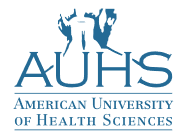Acetaminophen Toxicity and Pharmacology
By John V. Schloss, Ph.D., Professor, Chair, Associate Dean of Research, School of Pharmacy
In the past month, it has become apparent that many health practitioners do not understand the toxicity and pharmacology of acetaminophen (a.k.a. Paracetamol, APAP, Tylenol, and Panadol). When used at low doses, the risk of toxicity from acetaminophen is small. However, at high doses (greater than 4 grams within 24 hours), oxidative metabolic pathways for acetaminophen create a highly toxic metabolite. The metabolic pathways involved in overdose [CYP3A4 at therapeutic concentrations (50 μM) and CYP2E1, CYP1A2, and CYP2D6 at overdose (1 mM)]1 will convert a substantial fraction of acetaminophen to the glutathione-reactive metabolite N-acetyl-p-benzoquinone imine (NAPQI)2. Glutathione is essential to life. The liver contains the highest glutathione concentration in the body (5 mM). So, for anyone who consumes 4 grams (26 mmol) of acetaminophen in a short period, it is possible to produce enough of the reactive metabolite to destroy ALL of the liver glutathione (7 mmol in the average adult), resulting in permanent liver damage. Although glutathione is present in all tissues and is an abundant molecule (0.5-5 mM), the total body amount in a 75-pound child (14-136 mmol) or a 155-pound adult (28-280 mmol) is low enough to put their lives at risk from consuming relatively small amounts of acetaminophen. Destruction of glutathione by acetaminophen can be fatal.
There are 500 deaths per year in the United States, with 56,000 emergency room visits due to overdose and 2,600 hospitalizations.3 For children 1-6 years of age, 150 mg of acetaminophen can be toxic.4 The antidote for acetaminophen overdose, N-acetylcysteine (NAC), overcomes the toxicity by producing more glutathione in the liver. Aspirin and other NSAIDs (non-steroidal anti-inflammatory drugs) do not have this type of toxicity. Although aspirin is a reactive molecule and can cause Reye’s syndrome in children due to damage to the mitochondria.5
One question in pharmacy education is, “Why does aspirin increase bleeding risk and prevent blood coagulation, while acetaminophen does not have this pharmacology?”
The answer to this question involves the different mechanisms by which they inhibit the enzyme cyclooxygenase (COX) involved in prostaglandin biosynthesis. The mechanism by which aspirin inactivates the enzyme (enzyme acylation) is independent of intracellular versus extracellular localization. At the same time, potent inhibition of COX by acetaminophen requires cellular integrity since therapeutic levels inhibit the enzyme in intact cells but not in lysed cells.6 This observation can be explained by the effect of ‘peroxide tone’ on acetaminophen inhibition of COX, the fact that hydroperoxide-generating lipoxygenases lessen the potency of acetaminophen, and the buildup of COX substrates in the periphery to minimize the effectiveness of acetaminophen.7 The molecular mechanism of acetaminophen involves quenching an essential radical at tyrosine-385 in the COX active site. The potency of APAP depends on the failure to regenerate this tyrosyl radical, which explains its lack of potency in the periphery, where radical regeneration occurs more rapidly. So, although they both inhibit the same enzyme, aspirin is far more effective than acetaminophen as an anticoagulant. They are both effective for treating pain and fever, but aspirin is a potent anticoagulant, while acetaminophen is not.
References
- Laine, J. E., Auriola S., Pasanen, M., & Juvonen, R. O. (2009). Acetaminophen bioactivation by human cytochrome P450 enzymes and animal microsomes. Xenobiotica, 39(1), 11-21. https://doi.org/10.1080/00498250802512830
- Moore, M., Thor, H., Moore, G., Nelson, S., Moldéus, P., & Orrenius, S. (1985). The toxicity of acetaminophen and N-acetyl-p-benzoquinone imine in isolated hepatocytes is associated with thiol depletion and increased cytosolic Ca2+. Journal of Biological Chemistry, 260(24), 13035-13040. https://doi.org/10.1016/S0021-9258(17)38834-8
- Agrawal S, Khazaeni B. Acetaminophen Toxicity. [Updated 2022 Aug 1]. StatPearls Publishing; 2022 Jan-. Available from: https://www.ncbi.nlm.nih.gov/books/NBK441917/
- Ogilvie, J. D., Rieder, M. J., & Lim, R. (2012). Acetaminophen overdose in children. Canadian Medical Association Journal, 184(13), 1492–1496. https://doi.org/10.1503/cmaj.111338
- Trost, L. C., & Lemasters, J. J. (1996). The mitochondrial permeability transition: a new pathophysiological mechanism for Reye’s syndrome and toxic liver injury. Journal of Pharmacology and Experimental Therapeutics, 278(3), 1000-1005.
- Graham, G. G., Robins, S. A., Bryant, K. J., & Scott, K. F. (2001). Inhibition of prostaglandin synthesis in intact cells by paracetamol (acetaminophen). Inflammopharmacology, 9, 131-142. https://doi.org/10.1163/156856001300248407
- Anderson, B. J. (2008). Paracetamol (Acetaminophen): mechanisms of action. Pediatric Anesthesia, 18(10), 915-921. https://doi.org/10.1111/j.1460-9592.2008.02764.x

